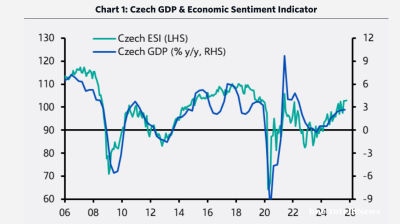The Russian ruble lost 2% on April 7, falling to a five-month low of RUB77.7 vs the dollar as the market was unnerved by the biggest military build-up so far of Russian forces on the Ukrainian border.
The ruble has been volatile this year as it has been buffeted by geopolitical uncertainties. Analysts say its fundamental fair value is around RUB68 to the dollar and after falling to a low of RUB80 last year, hit by the double whammy of the coronacrisis and an oil price shock, it has made a recovery to a high of RUB73 this year as economies around the world come out of the crisis. Economists were widely forecasting a recovery to RUB72-73 by the end of this year as Russia’s economy bounces back, but the exchange rate fell briefly below RUB78 to the dollar in nervous trading on April 7.
The Kremlin tried to reassure markets, saying that the volatility “doesn't affect Russia’s economic stability”, but failed to calm fears.
However, the currency has been set back again by the inflamed tensions. While, as bne IntelliNews columnist Mark Galeotti wrote in an op-ed this week, the majority of veteran Russia’s watchers believe Russia will not invade Ukraine, Russia’s track record includes the annexation of Crimea in 2014 and the military support given to the separatist fighters in Donbas, as bne IntelliNews columnist Robert Homans points out this week in another comment, which is enough to make currency traders very nervous.
The domestic bond market has also been hit by mounting fears as foreign investors sell off the Russian Ministry of Finance ruble-denominated OFZ treasury bills. Recent rumours that the White House was intending to impose harsh sanctions and ban US investors from holding the OFZ led to such heavy selling that the Ministry of Finance cancelled the auction on March 26. The auction was back on the following week, but three quarters of the bonds placed were bought by Russian state-owned banks.
The Russian equity market has also sold off, with the leading RTS index climbing to a high of just over 1,500 earlier this year before falling again in the last few weeks to close at 1,429 on April 7. The year-to-date return from the dollar-denominated RTS has fallen from a high of around 7% to just 2.1% as of the close of trading yesterday.
While a spokesperson for Ukraine’s foreign ministry also said that Russia’s military build-up is signalling to the US and its Western allies, both Washington and Brussels have responded harshly to Russian aggression.
Western governments have warned Russia against intimidating Ukraine and US President Joe Biden promised Ukrainian President Volodymyr Zelenskiy that Kyiv has the US' full support in their first phone at the end of last week.
Zelenskiy has poured some oil on the fire on April 6 by calling on NATO to accelerate Ukraine’s accession to the military organisation. NATO has not offered Ukraine membership and its accession is a red line for Moscow. As the prospects for Ukraine joining NATO are slim, Zelenskiy’s comments were probably largely aimed at the domestic audience, where his popularity has been falling recently.
News

Northern Afghanistan hit by M6.3 tremor
A powerful earthquake has struck northern Afghanistan, leaving at least four people dead and scores injured, according to local officials. The numbers are expected to rise significantly.

Kerala becomes India’s first state to declare freedom from extreme poverty
The state's Chief Minister described the moment as the dawn of a new era for Kerala, attributing the achievement to a sustained four-year effort under the Extreme Poverty Alleviation Project.

Tensions rise in Serbia as protesters clash outside parliament
The confrontation followed a massive anti-government demonstration in Novi Sad on November 1.

Russia launches Khabarovsk nuclear submarine designed to deploy nuclear-capable Poseidon drones
Russia has launched a new strategic nuclear submarine, the Khabarovsk, which is capable of carrying a dozen of the Kremlin’s recently unveiled nuclear-powered Poseidon torpedo—a next-generation weapons system that Putin called "unstoppable."




